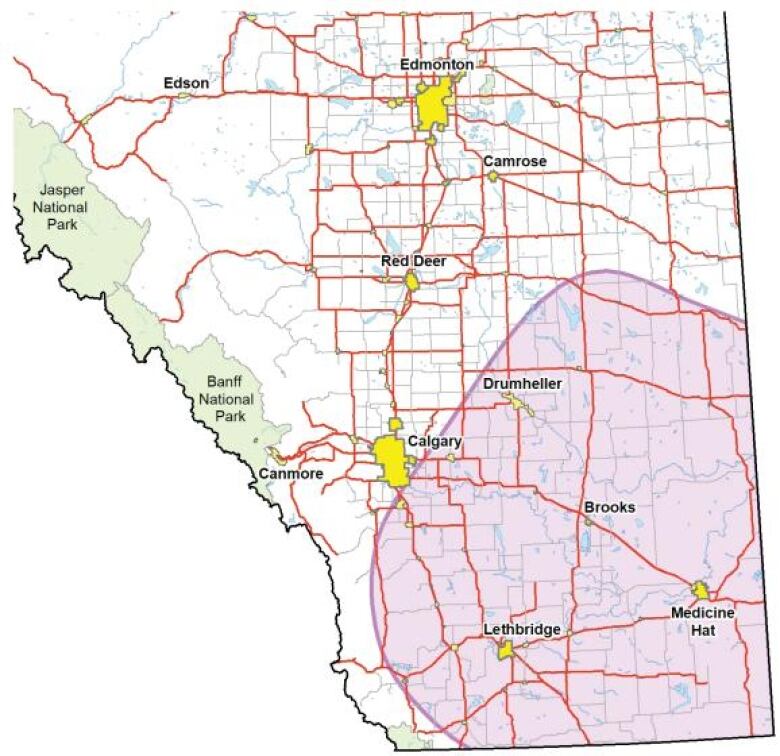Alberta is updating its plan to boost an endangered hawk population
Ferruginous hawk has been on the endangered species list since 2006

The ferruginoushawk,known as North America's largest hawk,has been endangeredsince 2006under Alberta's Wildlife Act. Now, theAlberta government isupdating its plan to improve the predator's status and move it off the list for good.
The bird of prey lives in thegrassland natural region inprovince's southeast.
Since pre-settlement, the species population has decreased 40 per cent, according tothegovernment's ferruginous hawk recovery plan.There was a dramatic decline in the number of ferruginous hawks between 1992 and 2000.
As of 2015, there were 600 to 700 pairs, which the governmenthighlights asa low.The numbers have slowly increased since then.
The updated plan will put a focus on the species' biggest threats,which includehabitat loss, habitat disturbance, reduced nesting opportunities, reduced prey populations, increased numbers of competitors, indirect human-caused mortalityand climate change.

Strategies for the recovery of the species involveprotecting nest sites, reducing human disturbance, maintaining existing native grasslands and pasture landson public and private land, and maintaining and enhancingprey populations.
"Ensuring grasslands are maintained for species like ferruginous hawks is crucial,' saidBrad Downey, a senior biologist with theAlberta Conservation Association, in a news release.
"Continued support and collaboration from landowners, along with society's desire to see ferruginous hawks thrive, provides a promising future for this and other species as long as we maintain intact grasslands."
The plan's recoverygoalis to bring Alberta'slong-term average population to 1,300 pairs of ferruginoushawks. The shorter termgoals include bringing the population to 800 pairs and maintaining the current population.
While the updated plan document noted previous efforts have slightly increased the population, it saidthe updates areneeded for long-term recovery.
Alberta's Minister of Environment and Protected Areas Rebecca Schulz said the plan is"a collaborative, multi-year conservation effort between [the ministry] and multiple partners."
The government said the plan was developedand will beundertakenby Indigenous communities, industry, conservation groupsand other stakeholders.
Theferruginous hawk makes the grassland region its home in Alberta andlives exclusively in the Great Plains of North America.
Nationally, the hawk was listed as a "species of concern" in 2007. In 2009, it was listed as threatened.
Alberta is playing a role in helping the federal government developits ownferruginous hawk recovery strategy.












_(720p).jpg)


 OFFICIAL HD MUSIC VIDEO.jpg)
.jpg)



























































































